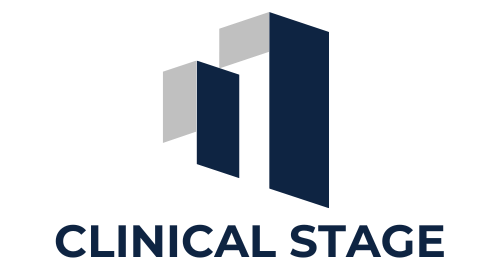Post-Market Surveillance and Drug Safety
Ensuring drug safety is paramount throughout a product's lifecycle, from initial development through to market release and beyond. The commitment to maintaining a high standard of drug safety is critical not only for protecting patient health but also for sustaining public trust in pharmaceutical innovations. As new drugs and therapies are developed and approved, the monitoring of their safety profile must continue long after they hit the market. This ongoing vigilance is necessary to identify, assess, and mitigate any potential risks that may arise during real-world use, which may not have been evident in clinical trials.
Post-market surveillance (PMS) is a comprehensive program designed to monitor the safety and efficacy of pharmaceutical products once they have been approved for public use. PMS involves the systematic collection, analysis, and interpretation of data related to adverse drug reactions, side effects, and other safety concerns that emerge after a drug has been released. This process is essential for identifying potential safety issues that could impact patient health, enabling regulatory bodies and manufacturers to take appropriate actions to ensure continued drug safety.
This blog aims to provide an in-depth exploration of post-market surveillance and its crucial role in maintaining drug safety. We will discuss the various methodologies and tools used in PMS, highlight key regulatory requirements, and examine the challenges and opportunities associated with this critical aspect of pharmacovigilance. By understanding the importance of PMS, stakeholders in the pharmaceutical industry can better appreciate the need for robust drug safety measures and the continuous efforts required to protect patients and maintain public trust.
Understanding Post-Market Surveillance
Post-market surveillance (PMS) refers to the activities and systems in place to monitor the safety and effectiveness of pharmaceutical products after they have been approved for market release. PMS encompasses a wide range of activities, including the collection of adverse event reports, analysis of real-world data, and the implementation of risk management plans. The goal is to detect any unforeseen issues that could impact patient safety, allowing for timely interventions to mitigate risks.
PMS is not a one-time effort but an ongoing process that requires continuous vigilance. It involves collaboration between regulatory authorities, healthcare professionals, and pharmaceutical companies to ensure that any potential risks associated with a drug are promptly identified and addressed. This proactive approach helps safeguard public health by ensuring that the benefits of a drug continue to outweigh its risks.
The Role of PMS in Ensuring Ongoing Drug Safety
The primary role of post-market surveillance is to ensure the ongoing safety of pharmaceutical products once they are available to the public. While clinical trials provide valuable data on a drug's safety and efficacy, they are conducted under controlled conditions with a relatively small and homogenous patient population. In contrast, real-world use involves a diverse group of patients with varying health conditions, co-morbidities, and concomitant medications. This diversity can lead to the emergence of new safety signals that were not detected during clinical trials.
PMS helps in identifying these new safety signals through various mechanisms, such as spontaneous reporting systems, electronic health records, and patient registries. By continuously monitoring the drug's performance in the real world, PMS enables regulatory agencies and manufacturers to take corrective actions, such as updating labeling information, issuing warnings, or even withdrawing the product from the market if necessary. This ensures that patients continue to receive safe and effective treatments throughout the product's lifecycle.
Historical Context and Evolution of PMS Practices
The concept of post-market surveillance has evolved significantly over the years. Historically, drug safety monitoring was largely reactive, relying on spontaneous reports of adverse events from healthcare professionals and patients. This approach, while valuable, had limitations in terms of data completeness and timeliness.
The thalidomide tragedy in the late 1950s and early 1960s marked a turning point in the history of drug safety. The severe birth defects caused by thalidomide highlighted the need for more rigorous and proactive safety monitoring. In response, regulatory frameworks were strengthened, and pharmacovigilance systems were established to enhance drug safety surveillance.
Since then, advancements in technology and data analytics have revolutionized PMS practices. The advent of electronic health records, big data analytics, and real-world evidence has enabled more comprehensive and timely monitoring of drug safety. Regulatory agencies, such as the FDA and EMA, have implemented sophisticated PMS programs that leverage these technologies to detect and assess safety signals more effectively.
Today, PMS is a dynamic and integral part of the drug lifecycle, ensuring that the safety of pharmaceutical products is continuously evaluated and maintained. This evolution reflects the industry's commitment to patient safety and the recognition that drug safety monitoring does not end with market approval but continues as an ongoing process.
The Importance of Drug Safety Monitoring
Ensuring Patient Safety and Public Health
The primary objective of drug safety monitoring is to ensure patient safety and protect public health. By continuously monitoring the safety profile of pharmaceutical products, regulatory agencies and healthcare providers can detect and respond to potential risks promptly. This proactive approach helps to prevent harm to patients and maintains confidence in the healthcare system. When safety issues are identified early, timely interventions can be implemented to mitigate risks, such as updating dosing recommendations, providing additional warnings, or even withdrawing a product from the market if necessary. This vigilant oversight is crucial in maintaining the delicate balance between the benefits and risks of medications.
Identifying and Managing Adverse Drug Reactions (ADRs)
Adverse drug reactions (ADRs) are unintended, harmful responses to medications that can occur in a wide range of scenarios, from mild side effects to severe, life-threatening conditions. The identification and management of ADRs are central to drug safety monitoring. PMS systems play a critical role in detecting these reactions, often through spontaneous reporting systems where healthcare professionals and patients can report any adverse effects they encounter.
Once identified, ADRs are thoroughly evaluated to determine their severity, frequency, and potential impact on patient health. Regulatory agencies may require pharmaceutical companies to conduct additional studies or implement risk mitigation strategies to manage these adverse reactions effectively. By closely monitoring ADRs, healthcare providers can make informed decisions about the safest and most effective use of medications, ensuring that patients receive the best possible care.
Assessing Long-Term and Real-World Effectiveness of Drugs
While clinical trials provide crucial information about a drug's efficacy and safety under controlled conditions, they cannot capture the full spectrum of how a drug will perform in the broader, more diverse patient population. Drug safety monitoring through PMS allows for the assessment of long-term and real-world effectiveness of medications. This ongoing evaluation is essential to understanding how drugs work over extended periods and in various real-life settings.
Real-world data collected through PMS can reveal insights into a drug's long-term benefits, potential chronic side effects, and overall effectiveness in different patient populations. This information is invaluable for healthcare providers when making treatment decisions and for patients when weighing the risks and benefits of their medication options. Moreover, it helps pharmaceutical companies and regulators to continuously improve the safety and efficacy of their products, contributing to the overall advancement of medical science and patient care.
Key Components of Post-Market Surveillance
Spontaneous Reporting Systems
Explanation of Spontaneous Reporting and Its Role in PMS
Spontaneous reporting systems are a cornerstone of post-market surveillance, allowing healthcare professionals, patients, and pharmaceutical companies to report adverse drug reactions (ADRs) and other safety concerns voluntarily. These systems rely on the submission of individual case safety reports, which are then collected, analyzed, and evaluated to identify potential safety signals. The key advantage of spontaneous reporting is its ability to detect rare and unexpected ADRs that may not have been evident during clinical trials. By capturing real-world data on a drug’s safety profile, spontaneous reporting systems play a crucial role in identifying emerging risks and informing regulatory actions to protect patient safety.
Examples of Spontaneous Reporting Systems
Two prominent examples of spontaneous reporting systems include:
- FDA’s MedWatch: MedWatch is the U.S. Food and Drug Administration's (FDA) adverse event reporting program. It allows healthcare professionals and consumers to report serious problems they suspect are associated with the drugs and medical devices they prescribe, dispense, or use. MedWatch serves as an essential tool for detecting safety issues and initiating regulatory responses.
- EMA’s EudraVigilance: EudraVigilance is the European Medicines Agency's (EMA) system for managing and analyzing information on suspected adverse reactions to medicines authorized in the European Economic Area (EEA). It facilitates the collection of data on ADRs from various sources, enabling the EMA to monitor the safety of medicinal products and ensure timely regulatory interventions.
Active Surveillance
Description of Active Surveillance Methodologies
Active surveillance involves proactive and systematic efforts to monitor drug safety. Unlike spontaneous reporting, which relies on voluntary submissions, active surveillance seeks to collect comprehensive and real-time data through targeted methodologies. This approach includes regular follow-ups with patients, prospective cohort studies, and the use of sentinel systems that continuously gather safety information from healthcare settings. Active surveillance aims to provide a more accurate and timely assessment of a drug's safety profile, enabling quicker detection and response to potential safety concerns.
Use of Patient Registries and Electronic Health Records (EHRs)
Two critical tools in active surveillance are patient registries and electronic health records (EHRs):
- Patient Registries: These are organized systems that collect uniform data on patients diagnosed with a particular condition or using a specific medication. Registries can provide valuable insights into long-term outcomes, rare adverse events, and the effectiveness of treatments in diverse patient populations.
- Electronic Health Records (EHRs): EHRs contain comprehensive health information about patients, including medication histories, laboratory results, and clinical notes. By leveraging EHR data, healthcare providers and regulatory agencies can conduct detailed analyses of drug safety and efficacy, identify trends, and promptly address any safety issues that arise.
Pharmacovigilance
Definition and Scope of Pharmacovigilance
Pharmacovigilance is the science and activities related to the detection, assessment, understanding, and prevention of adverse effects or any other drug-related problems. The scope of pharmacovigilance extends beyond the mere collection of data; it includes the evaluation of safety signals, risk assessment, and the implementation of measures to mitigate identified risks. Pharmacovigilance is a continuous process that involves close collaboration between pharmaceutical companies, healthcare professionals, and regulatory agencies to ensure the safe use of medications.
The Role of Pharmacovigilance Centers and Regulatory Agencies
Pharmacovigilance centers and regulatory agencies play a pivotal role in post-market surveillance. They are responsible for:
- Collecting and analyzing adverse event reports.
- Conducting risk assessments and benefit-risk evaluations.
- Communicating safety information to healthcare providers and the public.
- Implementing regulatory actions, such as label changes, safety warnings, or product withdrawals, to protect patient safety.
Examples of these entities include the FDA’s Office of Surveillance and Epidemiology and the EMA’s Pharmacovigilance Risk Assessment Committee (PRAC).
Risk Management Plans (RMPs)
Importance of RMPs in PMS
Risk Management Plans (RMPs) are essential components of post-market surveillance. They outline the strategies and actions that pharmaceutical companies will take to identify, characterize, prevent, or minimize risks associated with their products. RMPs are designed to ensure that the benefits of a drug continue to outweigh its risks throughout its lifecycle. By proactively addressing potential safety issues, RMPs enhance the overall effectiveness of PMS and contribute to better patient outcomes.
Components of an Effective RMP
An effective RMP typically includes the following components:
- Safety Specification: A detailed description of the identified and potential risks associated with the drug, based on pre- and post-marketing data.
- Pharmacovigilance Plan: A comprehensive strategy for monitoring and evaluating the safety of the drug, including plans for active and passive surveillance.
- Risk Minimization Measures: Specific actions and interventions designed to mitigate identified risks, such as changes to prescribing information, educational materials for healthcare providers, and patient monitoring programs.
- Evaluation and Review: Ongoing assessment of the effectiveness of the RMP, including regular updates and modifications based on new safety information and emerging risks.
By incorporating these components, RMPs play a critical role in maintaining the safety and efficacy of pharmaceutical products, ensuring that patients receive the best possible care while minimizing potential risks.
Technologies and Methods in Post-Market Surveillance
Big Data and Analytics
Utilizing Big Data for Drug Safety Monitoring
The advent of big data has transformed post-market surveillance by enabling the analysis of vast and complex datasets. Big data in drug safety monitoring encompasses information from diverse sources, such as electronic health records (EHRs), social media, clinical trials, and patient registries. By integrating and analyzing this wealth of data, healthcare providers and regulatory agencies can uncover patterns and trends that might otherwise remain hidden. This comprehensive approach enhances the ability to detect adverse drug reactions (ADRs), understand drug interactions, and assess the real-world effectiveness of medications.
AI and Machine Learning in Detecting Safety Signals and Trends
Artificial intelligence (AI) and machine learning (ML) are increasingly being leveraged to improve the efficiency and accuracy of post-market surveillance. These technologies can process and analyze large datasets at unprecedented speeds, identifying safety signals and trends that might be missed by traditional methods. AI algorithms can sift through EHRs, social media posts, and other data sources to detect early warning signs of potential ADRs. Machine learning models can continuously learn and improve from new data, refining their predictions and providing more accurate risk assessments. This proactive approach enables faster identification and response to safety concerns, ultimately improving patient outcomes.
Electronic Health Records (EHRs)
Leveraging EHRs for Real-Time Surveillance
Electronic Health Records (EHRs) are a critical tool in real-time drug safety surveillance. EHRs contain comprehensive and up-to-date information about patients, including their medical histories, diagnoses, treatments, and outcomes. By harnessing EHR data, healthcare providers and regulators can monitor the safety and efficacy of drugs in real time. EHR-based surveillance allows for the early detection of adverse events, enabling timely interventions to prevent harm to patients.
Case Studies of EHR-Based PMS
Several case studies highlight the effectiveness of EHR-based post-market surveillance:
- Sentinel Initiative: The FDA’s Sentinel Initiative utilizes EHRs and other healthcare data to monitor the safety of FDA-regulated medical products. Through this program, the FDA can rapidly evaluate the safety of drugs and vaccines, leading to timely regulatory actions when necessary.
- National Health Service (NHS) in the UK: The NHS uses EHR data to monitor drug safety and effectiveness across its vast network of healthcare facilities. By analyzing EHR data, the NHS has been able to identify and mitigate safety risks associated with various medications, improving patient safety on a national scale.
Patient-Reported Outcomes (PROs)
Incorporating PROs in PMS to Capture Patient Experiences
Patient-Reported Outcomes (PROs) provide valuable insights into patients' experiences with medications, capturing data on symptoms, side effects, and overall quality of life. Incorporating PROs into post-market surveillance allows for a more comprehensive understanding of a drug's impact from the patient’s perspective. This patient-centered approach helps identify issues that might not be evident through clinical assessments alone, ensuring that the patient voice is an integral part of drug safety monitoring.
Tools and Platforms for Collecting PROs
Various tools and platforms are available for collecting PROs, including:
- Mobile Health Apps: These apps enable patients to report their symptoms and side effects in real time, providing continuous feedback to healthcare providers and researchers.
- Online Surveys and Questionnaires: Web-based platforms allow patients to complete standardized surveys and questionnaires, capturing detailed information about their experiences with medications.
- Wearable Devices: Wearable technology can monitor various health metrics and provide real-time data on a patient’s condition, complementing traditional PRO methods.
By leveraging these tools, healthcare providers and regulatory agencies can gather comprehensive data on patient experiences, enhancing the overall effectiveness of post-market surveillance.
Regulatory Frameworks and Guidelines
Global Regulatory Agencies
Overview of Key Regulatory Bodies
Effective post-market surveillance (PMS) relies on a robust regulatory framework managed by key global regulatory bodies. These agencies set the standards and guidelines for monitoring drug safety and ensure that pharmaceutical companies comply with these regulations. Some of the most influential regulatory agencies include:
- U.S. Food and Drug Administration (FDA): The FDA is responsible for protecting public health in the United States by ensuring the safety, efficacy, and security of drugs, biologics, and medical devices. The FDA oversees post-market surveillance through programs like the Sentinel Initiative and MedWatch.
- European Medicines Agency (EMA): The EMA is a decentralized agency of the European Union responsible for the scientific evaluation, supervision, and safety monitoring of medicines. The EMA’s EudraVigilance system collects and analyzes information on adverse drug reactions, supporting the agency's role in ensuring drug safety in the EU.
- World Health Organization (WHO): The WHO provides international leadership in public health, including the coordination of global pharmacovigilance efforts. The WHO’s Programme for International Drug Monitoring facilitates the exchange of drug safety information between member countries, enhancing global drug safety surveillance.
Their Roles in Post-Market Surveillance and Drug Safety
These regulatory bodies play crucial roles in post-market surveillance and drug safety by:
- Setting Standards and Guidelines: Establishing regulations and guidelines for the monitoring and reporting of adverse drug reactions (ADRs) and other safety issues.
- Collecting and Analyzing Data: Utilizing advanced systems to gather and analyze data on drug safety from various sources, including healthcare providers, patients, and pharmaceutical companies.
- Conducting Risk Assessments: Performing thorough risk assessments to evaluate the benefit-risk profiles of drugs, leading to informed regulatory decisions.
- Enforcing Compliance: Ensuring that pharmaceutical companies adhere to regulatory requirements and take appropriate actions to mitigate identified risks.
- Communicating Safety Information: Disseminating safety information to healthcare providers, patients, and the public to promote the safe use of medications.
Regulatory Requirements and Guidelines
Key Regulations Governing PMS
Pharmaceutical companies must comply with various regulations and guidelines to ensure effective post-market surveillance. Some of the key regulations include:
- FDA’s Risk Evaluation and Mitigation Strategies (REMS): REMS are required for certain medications to ensure that their benefits outweigh their risks. These strategies may include medication guides, communication plans, and elements to assure safe use (ETASU). The FDA monitors compliance with REMS and evaluates their effectiveness in mitigating risks.
- EMA’s Post-Authorization Safety Studies (PASS): PASS are conducted to gather additional information on a drug's safety after it has been authorized for market use. These studies are designed to identify, characterize, or quantify safety hazards, confirm the safety profile of the product, or measure the effectiveness of risk management measures. Pharmaceutical companies must submit PASS protocols and results to the EMA for review.
Compliance and Reporting Obligations for Pharmaceutical Companies
Pharmaceutical companies have several obligations to ensure compliance with regulatory requirements for post-market surveillance:
- Adverse Event Reporting: Companies must report any adverse events related to their products to regulatory agencies in a timely manner. This includes serious and unexpected ADRs, as well as any new safety information that may impact the product's benefit-risk profile.
- Periodic Safety Update Reports (PSURs): These reports provide a comprehensive review of a drug’s safety data, including a summary of adverse events, risk assessments, and any actions taken to mitigate risks. PSURs are submitted to regulatory agencies at regular intervals.
- Risk Management Plans (RMPs): Companies must develop and implement RMPs that outline the strategies and actions to identify, characterize, prevent, or minimize risks associated with their products. RMPs must be submitted to regulatory agencies for approval and updated as new safety information becomes available.
- Compliance with Post-Authorization Safety Studies (PASS): When required, companies must conduct PASS to gather additional safety information. This involves designing the study, collecting data, analyzing results, and submitting findings to regulatory agencies.
By adhering to these regulatory requirements and guidelines, pharmaceutical companies play a critical role in ensuring the ongoing safety and effectiveness of their products. This collaborative effort between regulatory bodies and the industry is essential for protecting public health and maintaining trust in the healthcare system.
Challenges in Post-Market Surveillance
Data Quality and Completeness
Ensuring Accurate and Comprehensive Data Collection
One of the most significant challenges in post-market surveillance (PMS) is ensuring the accuracy and comprehensiveness of collected data. The quality of PMS data is crucial for identifying adverse drug reactions (ADRs) and making informed regulatory decisions. However, data collected through spontaneous reporting systems, electronic health records (EHRs), and other sources can be incomplete or inaccurate. To address this, regulatory agencies and pharmaceutical companies must implement robust data validation and verification processes. Training healthcare professionals and patients on the importance of accurate reporting and utilizing advanced data collection tools can also improve data quality.
Addressing Underreporting and Data Inconsistencies
Underreporting of adverse events is a common issue in PMS, as healthcare professionals and patients may not report every adverse reaction they encounter. This can lead to gaps in safety data and delayed identification of safety signals. To mitigate underreporting, it is essential to raise awareness about the importance of ADR reporting and simplify the reporting process. Data inconsistencies, such as variations in coding and terminology, can also pose challenges. Standardizing data entry and using consistent coding practices can help address these inconsistencies and improve the reliability of PMS data.
Integration and Interoperability
Challenges in Integrating Data from Diverse Sources
Post-market surveillance relies on data from various sources, including spontaneous reporting systems, EHRs, patient registries, and social media. Integrating data from these diverse sources can be challenging due to differences in data formats, structures, and quality. Effective data integration requires the use of advanced data management systems and interoperability standards. By employing data integration platforms and harmonizing data standards, stakeholders can create a more cohesive and comprehensive PMS system.
Interoperability Issues Among Different Healthcare Systems
Interoperability among different healthcare systems is another significant challenge in PMS. Healthcare providers often use various EHR systems, each with its own data standards and protocols. This lack of interoperability can hinder the seamless exchange of data necessary for comprehensive drug safety monitoring. To address this, regulatory agencies and healthcare organizations must work towards developing and implementing interoperability standards that facilitate data sharing across different systems. Collaborative efforts and the adoption of global health information exchange standards, such as HL7 and FHIR, can improve interoperability and enhance the effectiveness of PMS.
Timely Detection and Response
Balancing Thorough Analysis with Timely Action
Timely detection and response to safety signals are critical for effective post-market surveillance. However, there is often a need to balance thorough analysis with the urgency of taking action. Comprehensive data analysis is necessary to accurately assess the significance of safety signals and determine the appropriate regulatory response. Yet, delays in analysis can prolong patient exposure to potential risks. To address this challenge, regulatory agencies and pharmaceutical companies can leverage AI and machine learning algorithms to expedite data analysis while maintaining accuracy. Streamlining the review and decision-making processes can also help ensure timely actions are taken to protect patient safety.
Challenges in Signal Detection and Risk Communication
Detecting safety signals in vast and complex datasets can be challenging. Signal detection requires sophisticated algorithms and analytical methods to identify patterns and anomalies that may indicate potential safety issues. False positives and negatives can complicate the process, necessitating rigorous validation and verification. Once a safety signal is identified, effectively communicating the risk to healthcare providers, patients, and the public is another challenge. Clear, concise, and transparent communication is essential to ensure that stakeholders understand the risks and take appropriate actions. Developing standardized communication protocols and utilizing multiple channels can enhance the effectiveness of risk communication in PMS.
Case Studies and Success Stories
Post-market surveillance (PMS) has been instrumental in identifying and mitigating drug safety issues, leading to successful regulatory actions and improved patient outcomes. Here are some notable case studies and success stories that highlight the effectiveness of PMS:
Case Study 1: Early Detection of a Rare Adverse Event Leading to Regulatory Action
Background: A pharmaceutical company released a new medication for treating a chronic condition. Despite thorough pre-market testing, a rare adverse event (AE) was reported shortly after the drug's market release.
PMS Actions: The spontaneous reporting system quickly captured multiple reports of a severe AE that had not been observed during clinical trials. These reports were submitted by healthcare professionals through the FDA’s MedWatch and the EMA’s EudraVigilance systems.
Outcome: Regulatory agencies promptly conducted a thorough analysis of the reported cases, which confirmed a causal relationship between the medication and the adverse event. The FDA and EMA issued safety warnings and updated the drug’s labeling to include the newly identified risk. Additionally, the pharmaceutical company implemented a Risk Evaluation and Mitigation Strategy (REMS) to minimize the risk and ensure patient safety. This swift regulatory action prevented further occurrences of the adverse event, showcasing the critical role of PMS in protecting public health.
Case Study 2: Successful Risk Mitigation Through an Enhanced RMP
Background: A widely used medication for hypertension was found to have potential long-term side effects that were not evident during initial clinical trials.
PMS Actions: The pharmaceutical company, in collaboration with regulatory agencies, developed an enhanced Risk Management Plan (RMP). This plan included additional pharmacovigilance activities, such as long-term observational studies and active surveillance using patient registries.
Outcome: The enhanced RMP successfully identified specific patient populations at higher risk of developing the long-term side effects. This led to targeted risk minimization measures, including revised dosing recommendations and comprehensive patient education materials. The proactive approach significantly reduced the incidence of adverse effects, ensuring safer use of the medication and maintaining its therapeutic benefits.
Case Study 3: Utilizing Big Data Analytics to Improve Drug Safety Monitoring
Background: A new biologic drug for autoimmune diseases showed promising results in clinical trials but required close monitoring for potential rare adverse reactions post-approval.
PMS Actions: The pharmaceutical company leveraged big data analytics and machine learning algorithms to monitor real-world data from electronic health records (EHRs), patient registries, and social media platforms. This innovative approach enabled the continuous and real-time assessment of the drug’s safety profile.
Outcome: By integrating and analyzing vast amounts of data, the company was able to detect early safety signals and identify potential risks more accurately. This proactive monitoring led to timely updates in the drug’s safety information and adjustments in treatment guidelines, significantly improving patient safety. The use of big data analytics demonstrated how advanced technologies could enhance the effectiveness of post-market surveillance.
Case Study 4: Notable Labs’ Precision Medicine Platform Enhancing PMS
Background: Notable Labs, a pioneer in precision medicine, launched a new drug targeting rare cancers. Given the innovative nature of the drug, continuous monitoring was crucial to ensure patient safety and optimize therapeutic outcomes.
PMS Actions: Notable Labs employed its precision medicine platform to conduct comprehensive post-market surveillance. The platform integrated genomic data, real-world evidence, and patient-reported outcomes to monitor the drug's effectiveness and safety in diverse patient populations.
Outcome: The platform’s advanced analytics identified genetic markers associated with better or worse responses to the drug, allowing for personalized treatment adjustments. Additionally, early detection of potential adverse reactions through patient-reported outcomes enabled timely interventions. The precision medicine approach not only enhanced drug safety but also improved patient outcomes by tailoring treatments to individual needs. This case exemplifies how cutting-edge technology and personalized medicine can revolutionize post-market surveillance.
Future Trends in Post-Market Surveillance
Advanced Analytics and AI
The Growing Role of AI and Machine Learning in PMS
Artificial intelligence (AI) and machine learning (ML) are poised to play an increasingly significant role in post-market surveillance. These technologies can process vast amounts of data from diverse sources rapidly and efficiently, identifying patterns and trends that might elude human analysts. AI algorithms can automate the detection of adverse drug reactions (ADRs) by continuously scanning electronic health records (EHRs), social media posts, and other real-world data. This capability allows for more timely and accurate identification of safety signals, leading to quicker regulatory actions and improved patient outcomes.
Predictive Analytics for Proactive Risk Management
Predictive analytics, powered by AI and ML, is set to transform PMS by enabling proactive risk management. By analyzing historical data and identifying risk factors, predictive models can forecast potential adverse events before they occur. This foresight allows pharmaceutical companies and regulatory agencies to implement preventative measures, such as targeted risk mitigation strategies and personalized patient monitoring. Predictive analytics not only enhances drug safety but also optimizes resource allocation and improves overall healthcare efficiency.
Global Collaboration and Data Sharing
International Efforts to Enhance PMS Through Collaboration
Global collaboration and data sharing are essential for effective post-market surveillance. International efforts, such as the harmonization of regulations and the establishment of shared databases, enhance the ability to monitor drug safety across borders. Collaborative initiatives allow for the pooling of resources, expertise, and data, leading to more comprehensive and robust safety assessments. These efforts also facilitate the rapid dissemination of safety information, ensuring that healthcare providers and patients worldwide are informed of potential risks.
The Role of Initiatives Like the International Council for Harmonisation (ICH)
The International Council for Harmonisation (ICH) plays a crucial role in promoting global collaboration in drug safety monitoring. By developing standardized guidelines and fostering cooperation among regulatory authorities, the ICH helps to ensure consistent and high-quality post-market surveillance practices worldwide. The ICH’s initiatives facilitate the sharing of safety data and best practices, enabling regulatory agencies to address safety concerns more effectively and efficiently. The organization's work underscores the importance of harmonized regulations and international cooperation in enhancing drug safety.
Patient-Centric Approaches
Increasing Focus on Patient-Reported Outcomes and Experiences
The future of post-market surveillance is increasingly patient-centric, with a growing emphasis on incorporating patient-reported outcomes (PROs) and experiences. PROs provide valuable insights into how patients perceive their treatments, including the effectiveness and side effects of medications. By integrating PROs into PMS, regulatory agencies and pharmaceutical companies can gain a more comprehensive understanding of a drug's impact on patients' lives. This patient-centered approach ensures that the real-world experiences of patients inform drug safety assessments and regulatory decisions.
Enhancing Patient Engagement in Drug Safety Monitoring
Enhancing patient engagement in drug safety monitoring is crucial for the success of patient-centric PMS. Empowering patients to actively participate in reporting adverse events and sharing their experiences helps to gather more complete and accurate safety data. Leveraging digital health technologies, such as mobile apps and online platforms, can facilitate patient engagement by providing easy-to-use tools for reporting and tracking medication-related issues. Education and awareness campaigns can also encourage patients to take an active role in drug safety monitoring, fostering a collaborative effort between patients, healthcare providers, and regulatory agencies.
Recap of the critical role of post-market surveillance in drug safety
Post-market surveillance (PMS) is an essential component of the drug lifecycle, playing a critical role in ensuring the safety and efficacy of pharmaceutical products once they are available to the public. By continuously monitoring adverse drug reactions (ADRs), assessing real-world data, and implementing risk management strategies, PMS helps to identify and mitigate potential safety issues that were not evident during pre-market testing. Effective PMS protects patient health, maintains public trust in medical products, and supports the ongoing improvement of drug therapies.
Ongoing vigilance in post-market surveillance is paramount for promptly identifying and addressing new safety concerns. As healthcare environments and patient populations evolve, so too must the methodologies and technologies used in PMS. Innovation in data analytics, artificial intelligence (AI), and machine learning (ML) offers unprecedented opportunities to enhance the detection of safety signals and improve the accuracy of risk assessments. Embracing these advancements, along with global collaboration and patient-centered approaches, ensures that PMS remains robust and effective in safeguarding public health.
The future of drug safety and public health depends on the continuous advancement and implementation of comprehensive post-market surveillance practices. As the pharmaceutical landscape becomes increasingly complex, the integration of advanced technologies and global collaborative efforts will be crucial. By fostering an environment of ongoing innovation and vigilance, stakeholders can ensure that drug safety monitoring keeps pace with the development of new therapies, ultimately leading to better patient outcomes and enhanced public trust in healthcare systems.
Stakeholders across the pharmaceutical industry, including regulatory agencies, healthcare providers, and pharmaceutical companies, must prioritize robust post-market surveillance practices. By committing to continuous monitoring, data sharing, and patient engagement, these entities can collectively enhance drug safety. It is essential to invest in advanced technologies and foster international cooperation to create a more integrated and effective PMS system. Such efforts will not only protect patient health but also support the sustainable development of innovative medical products.
We invite all stakeholders, including healthcare professionals, patients, and industry experts, to share their experiences and insights related to post-market surveillance. Feedback and discussions are invaluable in understanding the challenges and opportunities within PMS, and in driving the continuous improvement of drug safety practices. By collaborating and exchanging knowledge, we can collectively contribute to the advancement of post-market surveillance and the enhancement of public health.
In conclusion, post-market surveillance is a vital and dynamic field that requires ongoing commitment and innovation to ensure drug safety. By leveraging advanced technologies, fostering global collaboration, and prioritizing patient-centric approaches, we can create a safer and more effective pharmaceutical landscape. Your engagement and feedback are crucial in this endeavor, and we look forward to hearing your thoughts and experiences with post-market surveillance.










